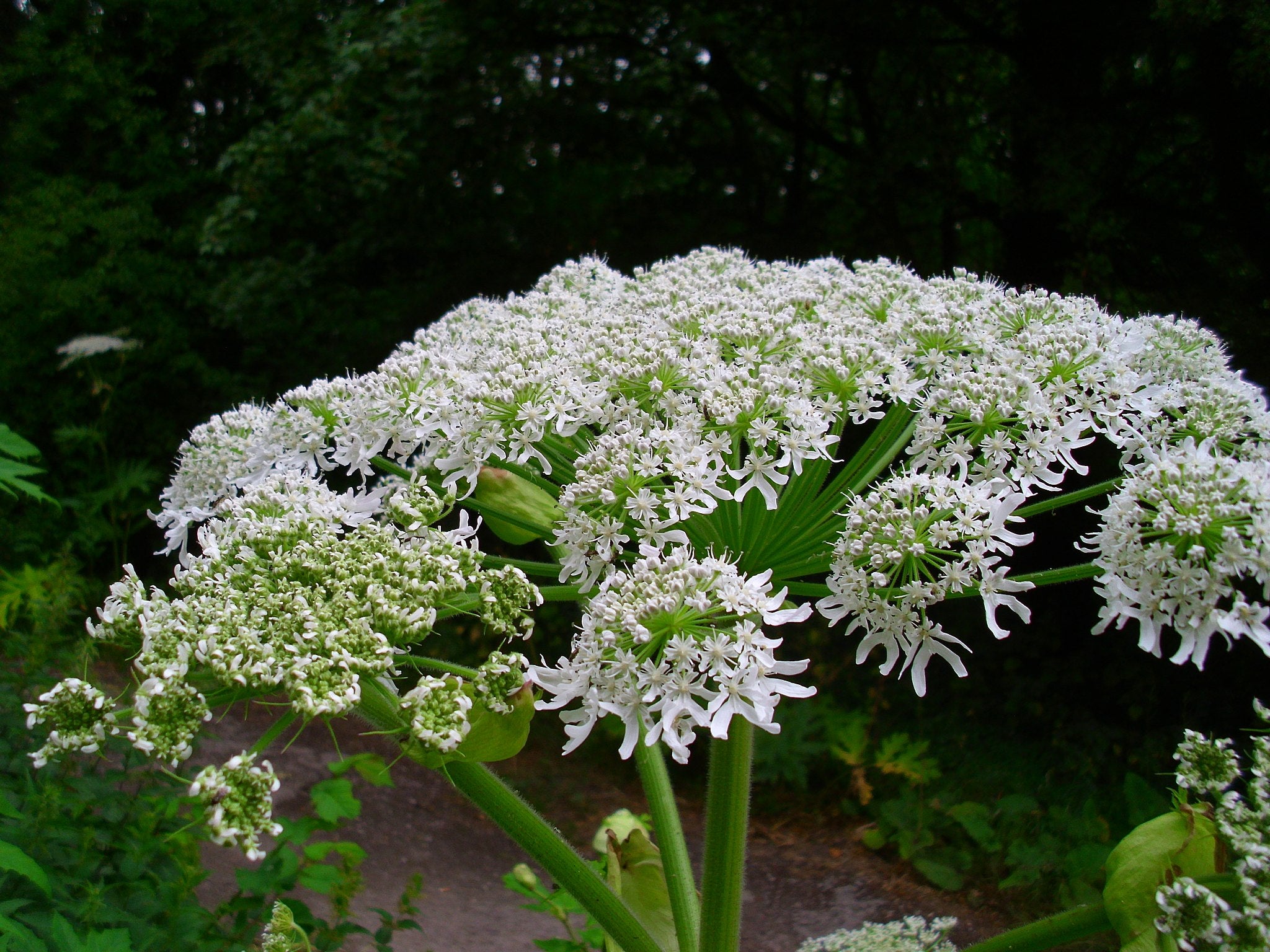Everything You Never Wanted to Know About Giant Hogweed, the Plant That Causes Third-Degree Burns

'Natubico'
If you’ve read the news lately, you’ve probably heard of giant hogweed. The invasive plants sound like something out of a horror film: they grow taller than a ranch house, have bristly white hairs lining their stem, and, oh, can give you third-degree burns if you disturb them.
Better yet, it’s spreading: While this invader was formerly mostly found in the northeast, staff from Virginia Tech’s Massey Herbarium confirmed earlier this month that the plant has now established itself in their state as well. Here’s what you need to know about giant hogweed.
What is giant hogweed?
Also known as giant cow parsnip or hogsbane, giant hogweed (heracleum mantegazzianum) is a member of the apiaceae family, a group of plants that includes carrots, dill, parsnip, caraway, and several other species of edibles. It’s native to central Asia.
If it’s native to central Asia, how’d giant hogweed get here?
This part’s a little embarrassing—it’s kind of our fault. Gardeners originally planted giant hogweed in the U.K. as an ornamental (the large, white, umbrella-shaped flower clusters do look quite pretty), and from there, it migrated to the United States and Canada. Unfortunately, once it’s established, controlling giant hogweed isn’t easy: In summer, its flowers send out thousands of winged seeds, which disperse on the wind, in bird droppings, and by floating in waterways.
Why is everyone so worried about giant hogweed?
Giant hogweed isn’t your average poisonous plant, in that you don’t need to eat it for it to harm you. The plant’s thin, clear sap contains compounds called furanocoumarins, which cause human skin to become extremely sensitive to sunlight. Once you’ve been exposed to it, you’re in for the worst sunburn of your life—big, nasty blisters that leave bruise-like scars. And while it does get better, some of that photosensitivity sticks around for years. The plant’s sap can also cause damage if it gets in your eyes, but reports of permanent blindness aren’t well supported by scientific evidence so far.
Where does giant hogweed grow?
Right now, the plant has been discovered in New York, Ohio, Maryland, Washington, Oregon, Pennsylvania, Michigan, Virginia, Vermont, New Hampshire, and Maine.
Should I be worried about giant hogweed?
That’s a tough question. Getting a burn from this invasive plant is no joke. That said, it’s not new: Giant hogweed first arrived in the United States 100 years ago, so you may well have been hiking near it and not realized it. Don’t touch it, and you’ll probably be fine.
How do I recognize giant hogweed?
This plant stands out. First of all, it’s tall, growing to as high as 14 feet. It has dome-shaped clusters of white flowers as large as 30 inches across. If you’re not sure, take a look at its stem: Giant hogweed’s has purple splotches and coarse, white hairs. It often grows near streams, ponds, and other bodies of water.
What do I do if I’m exposed to giant hogweed’s sap?
As soon as you have a chance, wash the affected area with soap and cold water to get as much of the sap off as possible. Then, get out of the sunlight: You’ll need to avoid UV rays for 48 hours, so queue up Netflix and put your feet up.
If your burn is particularly bad, or you get the sap in your eyes, seek medical attention immediately.